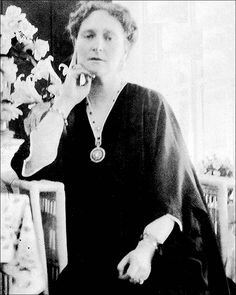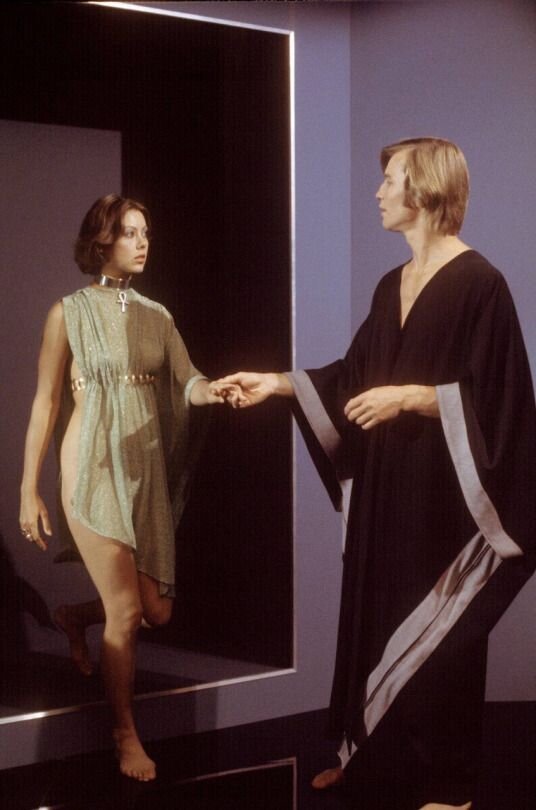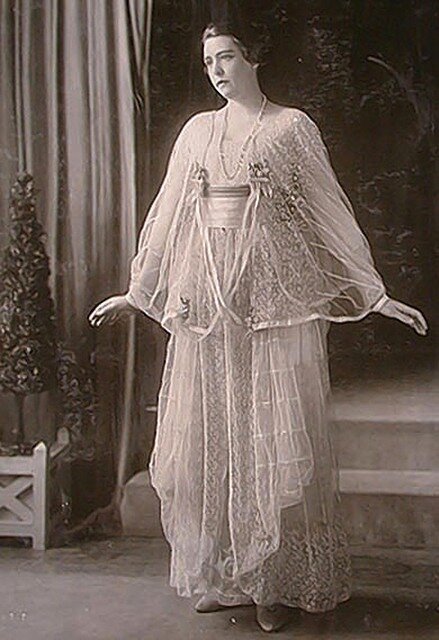What do Empress Alexandra Feodorovna and Michael York have in common? Loose, flowing garments for indoor wear, that’s what. Now that we’re all confined at home for the foreseeable future, let’s talk about comfortable clothes, Perfect Propriety, and the intersection where they meet, self care.
Inspiration comes in the oddest places. April 14-15, as we know, is the anniversary of the sinking of the RMS Titanic. Its glittering list of first-class passengers included the celebrity couturière Lucile, Lady Duff Gordon (traveling incognito with her husband, Sir Cosmo). Lucile got her start designing and producing original tea gowns for society ladies. And that got Etiquetteer thinking about What We Wear at Home during the Time of the Coronavirus.
TEA GOWNS
Tea gowns were created to give ladies some breathing room, literally, between day dresses and evening dresses that demanded corsets. Definitely an indoor garment, a lady would wear a tea gown if she was receiving in the late afternoon (during the tea hour, obviously). But her lady visitors would be wearing street clothes - afternoon dresses, walking suits, etc. At a country house party, however, all the ladies would slip on a tea gown for tea because they were all already inside the house.
Tea gown by the House of Worth, 1900-1901, in the collection of the Metropolitan Museum.
These were definitely luxury garments for a class of people used to luxury. Etiquetteer loves that they were described as “a kind of halfway house between a wrapper and a ball gown” at Five Minute History. Their 5-Minute Guide to the Tea Gown is worth your time, both for words and pictures. Another engaging, informative resource is Lily Absinthe’s post on tea gowns and Japonisme. Edwardian Promenade has even more information.
A Jacques Doucet tea gown ca. 1907 in the collection of the Metropolitan Museum.
After World War One, tea gowns were slowly supplanted by lounging pajamas and other Art Deco excesses. Lucile, very much identified with an era Very Decidedly Past, went bankrupt in 1923. As the century progressed, tea gowns seemed to become the Preferred Indoor Garment of Ladies of a Certain Age. There’s a charming account from the early 1950s of Etiquetteer’s dear friend, the late Emma Michie, hosting a group of visiting Northern ladies at a Gulf Coast fishing camp in Emily Kimbrough’s delightful travel memoir So Near and Yet So Far. “In the middle of kitchen on a low chair, Emma sat dressed in a beautiful, lacy, long-flowing tea gown, rocking violently back and forth, talking to the cook . . . [who] was laughing heartily. And as I watched them, the cook put down the dish she was filling, to give Emma a hearty hug. Emma caught sight of us, over the cook’s shoulder, and patting the cook’s arm released herself, rose slowly from the low rocker, and with great dignity, the tea gown trailing behind her, moved to the head of the table.”
CAFTANS
Fast forward to the excesses of another era, the Swinging Sixties, and we see the rise of the caftan. The official definition of caftan is “a usually cotton or silk ankle-length garment with long sleeves that is common throughout the Middle East.” Vogue Arabia tells the story here of the caftan’s emergence in the West from 19th-century Orientalia to midcentury couture (via Dior and Balenciaga) to “hippie chic.” “The popularity in America of the kaftan—from high end to mass market and cheap imports—stemmed from its association with exoticism as well as the easy-to-wear comfort of these pieces.” Caftans were one item the hippies made unisex, culminating in Michael York’s black and gray caftan for loungewear in Logan’s Run of 1976. After that, caftans fell out of style. Coincidence?* But attempts have been made in the 21st century to bring them back. Etiquetteer absolutely supports this, for ladies and gentlemen both.
CORONAVIRUS CLOTHING AND PERFECT PROPRIETY
Are your indoor clothes making you feel comfortable and elegant? We are all wearing our indoor clothing more now, and it is wonderful to feel so comfortable! But some of these comfortable clothes don’t always make us feel elegant or special. Obviously Etiquetteer is not running around the house in a suit and tie; T-shirts and fully-cut linen-weave hemp yoga pants are getting a lot of wear right now. But come the cocktail hour, Etiquetteer will change into what passes for lounging pajamas in this household: a crisper pair of fully-cut linen-weave hemp yoga pants and either a thin wool sweater, an enormous old dress shirt, or a shirt evoking the Exotic East. Dedicating that hour and making it special, including with what is worn, makes a true difference to Etiquetteer’s mood.** Yes, clothing is a Coronavirus Coping Mechanism.
Talking with a lady friend recently about Dress Dinner Challenge (it’s still on this Saturday night!), she said “Well, maybe, but it would mean wearing certain undergarments that have lain untouched in a drawer for a month now.” To which Etiquetteer perhaps scandalously replied “No you don’t! No one needs to know what’s going on under there, and it’s rude to ask anyway***.” Just as a tea gown was designed to avoid the corset, so a caftan might be used to jettison Other Binding Undergarments. But the more opaque the material, the more Perfectly Proper. (This did remind Etiquetteer of the importance of undergarments for ladies wearing hoop skirts in The King and I.)
Depression is a factor for many of us during the quarantine. What we put on our bodies can have just as much of an effect on our moods as what we put into them. You may not have a caftan or a tea gown in your wardrobe****, but there’s no reason not to choose something that makes you feel good, and look good, while wearing it. Have fun with it!
*With no disrespect to its adherents, Etiquetteer is just not a fan of Logan’s Run. But that’s a matter of personal preference, not Perfect Propriety.
**So does whatever’s in the shaker, but that is not the only influence during the cocktail hour.
***This is NOT the sort of liberty a gentleman takes with a lady in conversation as a rule!
****Here’s a DIY caftan suggestion. You might improvise one out of a couple flat sheets and some safety pins or brooches or something if you felt like it, but Etiquetteer won’t guarantee the results. You might at least have fun trying!






